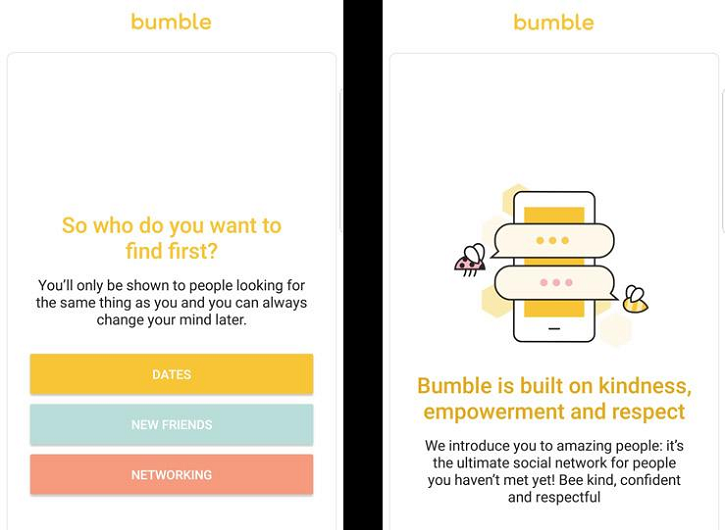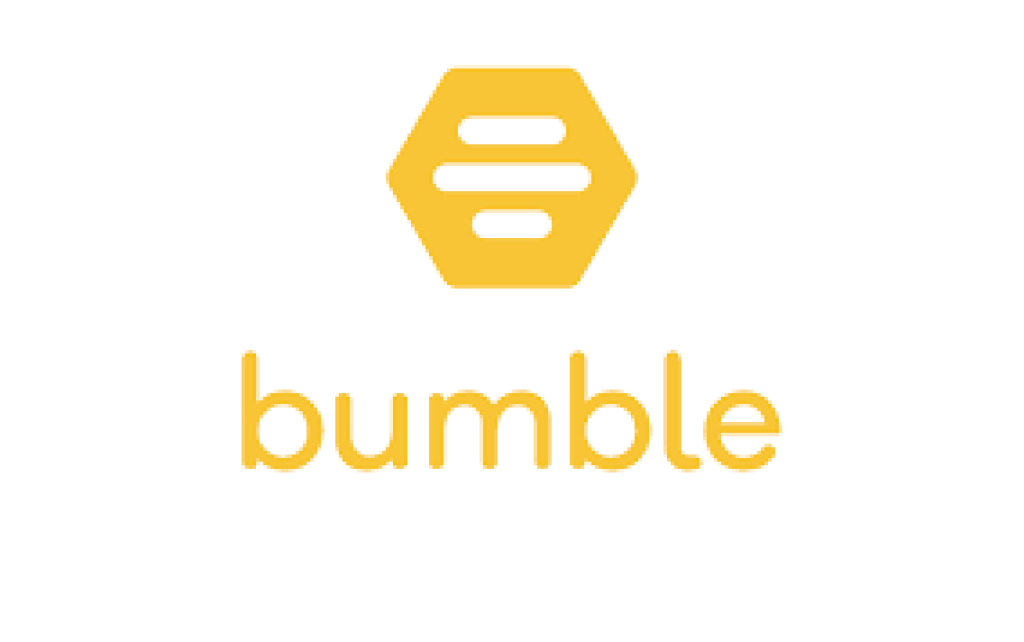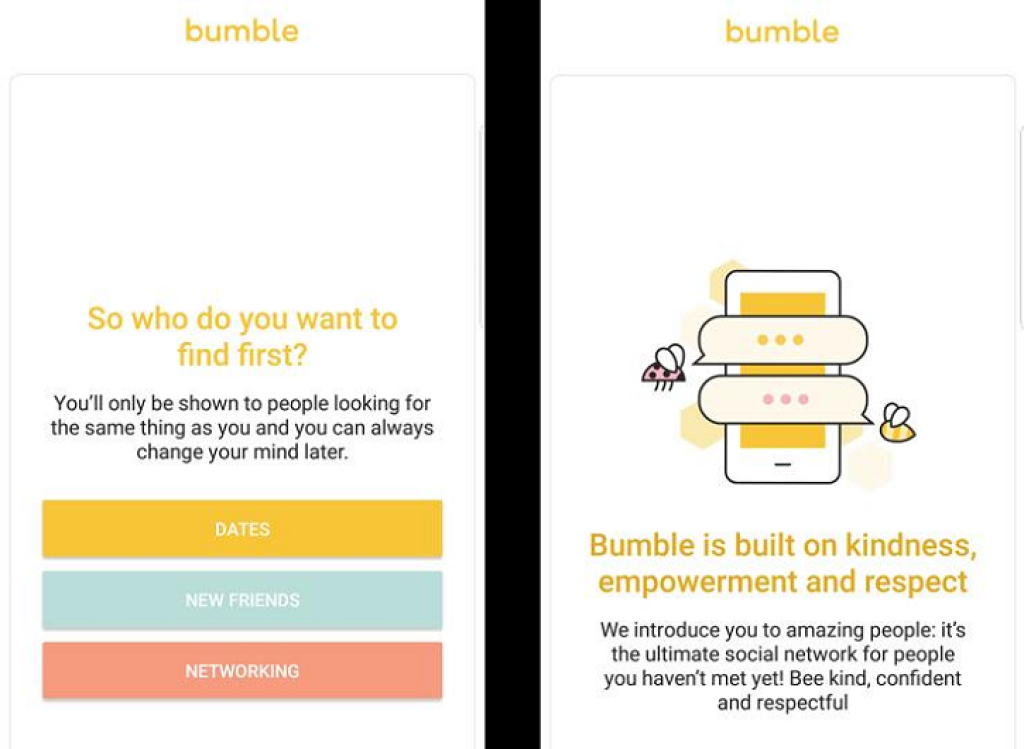

Unlike most other apps, rather than making you pick a gender, Bumble asks what you identify as. It shares this trait with other, more-modern services like Hinge and OkCupid, which lets you choose between a number of gender identities, including Hijra, genderfluid, and two-spirit. Nonbinary users can also now message anyone, and message them first.
Bumble Pros
- Excellent privacy and safety features Robust free version Fun and inclusive interface
- Video chat
Bumble Cons
- Profiles aren’t particularly substantial
- Superfluous friend-finder and business-networking options
Bumble Specs
| Video Calls | YES |
| Desktop App | YES |
| Starting Price | $16.99 per month |
Bumble is the dating app that puts the power in women’s hands. For a man to be able to contact a woman, she must first have shown interest in him, adding a layer of safety that other services lack. Bumble shares a lot of features with the popular Editors’ Choice pick app Tinder—specifically the concept of swiping to show your interest in a fellow user—but this app comes across much less like a meat market. If you are a guy who is happy to sit back and let the woman control the interactions, Bumble is your choice. And if you’re a woman who wants to take the power back in the online dating sphere—and cut down on all of the unwanted “lol u up?” inbound messages—Bumble is a terrific option.

Getting Started With Bumble
Bumble is available as both an Android app and iOS app, as well as the browser-based Bumble Web. Like many other dating apps, Bumble really wants you to log in via Facebook, but you also have the option to just use your phone number. After inputting your digits and adding your confirmation code sent via text message, the profile-building process begins. First, the app asks for a photo—even before getting to things like name, sex, and age. Of course, Bumble handily prompts you to auto-fill from Facebook again, and you’re given the option to add more photos right at the start.
You can also connect your Spotify and Instagram accounts, a feature that one of our Editors’ Choices, Tinder, also offers. Like Vinylly, it can even use music to judge compatibility.
While the signup process is quick and easy, Bumble doesn’t ask you the extensive list of personality questions that competitors such as eharmony and Match (another Editors’ Choice) do. That’s good if you want to get in and immediately start matching, but bad if you prefer apps that use more data to help you make the perfect connection.
After your first sign-in, the app explains that Bumble is where you build your Hive (which is its term for everyone you can meet on the app—love interests, new friends, and even business partners) and promises to be “the easiest and safest way” to create connections. You then see a screen with a sweet story about how the app is built on kindness, empowerment, and respect (though it’s not above a good “be”/”bee” pun), and asks you to be kind, confident, and respectful. Few apps care to set some ground rules at the get-go like this, even if this is the slimmest of requests. Bumble pleases with its inclusiveness, offering the option to be into not just men or women, but “everyone.”






